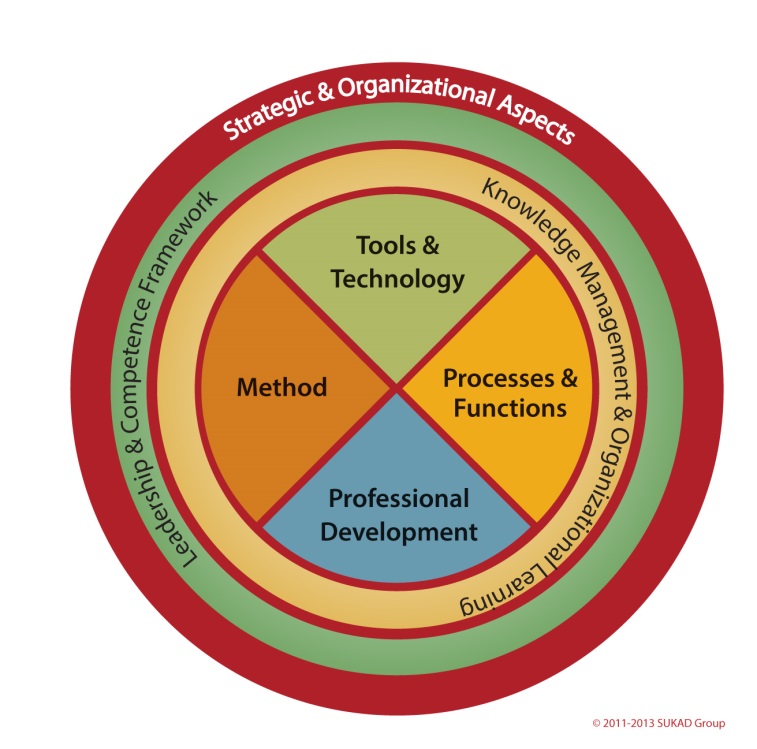This article is the fourth in a series of articles on case studies from the author own projects’ experience. We have recently presented these case studies as a workshop; part of a Project Management Conference (PM360) in Singapore that was organized by Knowledge Method, sponsored by RMC Project Management, and supported by SUKAD and two other partners.
Project Management Case Study 4
Project (Portfolio) Characteristics
- This case study is not for a single project; it is for an “Alliance Contract”
- The “Alliance Contract” was for a portfolio of projects,
- Alliance Contract is a long term “framework contract”,
- In this case, the Alliance was to manage all projects within a geographic area,
- The geographic area consisted of five process facilities (petrochemical plants).
- The actual situation is we had a project portfolio management office (PMO); although we did not use this terminology (not called PMO),
- Projects were mostly “revamp” (plants’ modifications)
- Which means: “small” projects; like equipment additions, piping modifications, etc.
- Basically, we were working inside operating (live) process units,
- Some projects were “shut down” or “Turnaround” maintenance projects
- These would be projects where a process unit would be shut down – for a short period of time
- Therefore, the work will be around the clock, and the overall duration might be 2 to 3 weeks
- There were about 40 or 50 small and medium size projects
- With ~ $100 million budget across all sites
- Small projects were from $0.2 up to $2 million US
- Medium projects were mostly up to $15 million
- We also had typically one or two large projects (in one case $50 million)

The Project Owner & Contractor
- Owner was petrochemical company, with multiple facilities, offices, and plants – globally
- Contractor was a leading global player; which was used to working on major/large projects
The Contract
- The contract was specific to a given geographical area (as mentioned above),
- The area included five process plants of different sizes,
- Four year contract, with possible renewal for 4 years increment,
- This specific contractor, replaced another contractor who was there for 4 years
- This is relevant to the case study, as you will see later, due to the possibility of not renewing the contract – contractor had something to lose
- Contract was reimbursable (cost plus), incentive contract,
- Budget set by owner with input from the contractor,
- The main challenge: if projects do not complete below budget, owner will have over expenditure or over-run situation, and contractor do not earn any profit,
- The opportunity: with projects performance, completion on or under budget, contractor will earn profit (could be higher or lower than plan).
Project Management
- The Project Owner (project management team – ‘PMO’) was responsible for the overall management of the projects (portfolio)
- The Contractor also had their own management team
- The above led to redundancies due to organizational culture, conflict of interest, trust or lack of, etc.
- Project Owner’s ‘PMO’ consisted of project engineers (PE) (each managing 5-10 projects), construction supervisors, safety and quality supervisors, but initially did not include project control; project control was the PE responsibility
- The project engineers (PE) were the de-facto project managers
- Project estimating and funding was done by an owner’s home office unit (outside the PMO) with input from PMO (owner and contractor)
- Contractor personnel included the project management staff (‘PMO’) in addition to engineering, procurement, and construction resources (EPC)
The Challenges
- Contractor was used to managing and delivering large projects; they were struggling with managing multiple small projects …
- Even their project control system was not customized or adapted for the multiple small projects environment
- The cost plus–incentive contract added to the pressure since contractor did not have control on setting the budget, which will be used to judge their performance … and … incentive
- Owner project engineers did not have enough project control (cost and schedule, change management) expertise or were too busy to focus on project control; their main focus is on implementation
- Project control, for the owner in a cost plus environment, is crucial since the risks are on the owner –, but this was a significant challenge since no one was dedicated for this function
- A major shut down project was one of the first projects under the alliance contract and was not going well; ended up with over-run (more than 110% of budget) and not sure how late behind schedule
- Conflict was high and escalating, which required a drastic change
Owner Initial Solution (Project Support Office)
- The owner decided to establish a project control/support office (‘PSO’) within the ‘PMO’ to take the leadership for all activities that the project engineers are not able to focus on; such as cost control, schedule control, coordination with estimating, forecasting …
- The ‘PSO’ was established with 3 people; with another resource added later
- One of those resources was a construction supervisor with limited computer skills and no project control experience
- Another team member was an estimator
- The lead was the only one with solid experience as an estimator, cost control, project control, and project engineering
- The contractor had about 20 people in project control role and close to 300 staff on the whole Alliance (excluding construction labor)
- The ‘PSO’ came into existence in the middle of the ongoing conflict
- PSO identified numerous problems in the contractor management and control – primarily due to large project vs. multiple small projects …
- PSO also identified some issues on the owner side è result added to the conflict
- Project control became the center of the conflict and confrontations; especially at the time of monthly reports (shoot the messenger syndrome) … Something has to be done!
Integration
- Adding the PSO by itself – gave the owner more resources and insights but the conflict was at the peak,
- New PM for the contractor – resulted in escalating conflict initially,
- We had to break through the conflict, which we did by getting him involved in the issues; basically used his pride and facts to shows the gaps,
- As we built relations with the new PM led to increased trust;
- Implementing educational sessions (for all staff),
- Establishing estimate feedback, budget reviews …
- Which led to integrating project control teams; under the leadership of owner PSO manager
- This was done with a great deal of resistance from both sides
- But Owner PSO Manager and Contractor PM persisted
- Project control identified areas of conflict and assigned integrated sub-teams to work them
- Charter: identify the deficiencies, develop solutions, train teammates, train staff
- Four to six weeks’ time frame, with reports at an offsite team-building sessions
- Despite the challenges and prior conflicts, the integrated teams worked through the issues, identified the gaps, developed recommendation for solutions, and had a successful offsite session where all presented their work
- After offsite session, teams immediately started to implement solutions
Results
- This effort was a significant contributor to enhancing project control performance and overall projects’ performance
- Also helped in renewing the Alliance Contract for another 4 years
 SUKAD offers learning programs for capital investment (intensive) projects such as the one discussed in this case study. These learning programs include PM Case Studies, Managing Project Success, Project Management for the Capital Intensive Projects, Project Management for Oil & Gas, Project Change Management for Capital Projects, Project Control for Managers, Project Control Workshop … Among many others.
SUKAD offers learning programs for capital investment (intensive) projects such as the one discussed in this case study. These learning programs include PM Case Studies, Managing Project Success, Project Management for the Capital Intensive Projects, Project Management for Oil & Gas, Project Change Management for Capital Projects, Project Control for Managers, Project Control Workshop … Among many others.
 We also provide organizational and consultancy solutions for these types of projects. These solutions include implementing project management office (PMO), project support office, project reviews, project control services, clients’ representative, and even full outsourcing solutions for small and medium size enterprises.
We also provide organizational and consultancy solutions for these types of projects. These solutions include implementing project management office (PMO), project support office, project reviews, project control services, clients’ representative, and even full outsourcing solutions for small and medium size enterprises.


